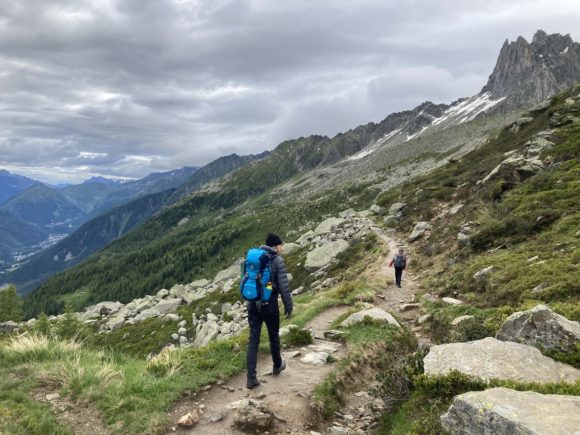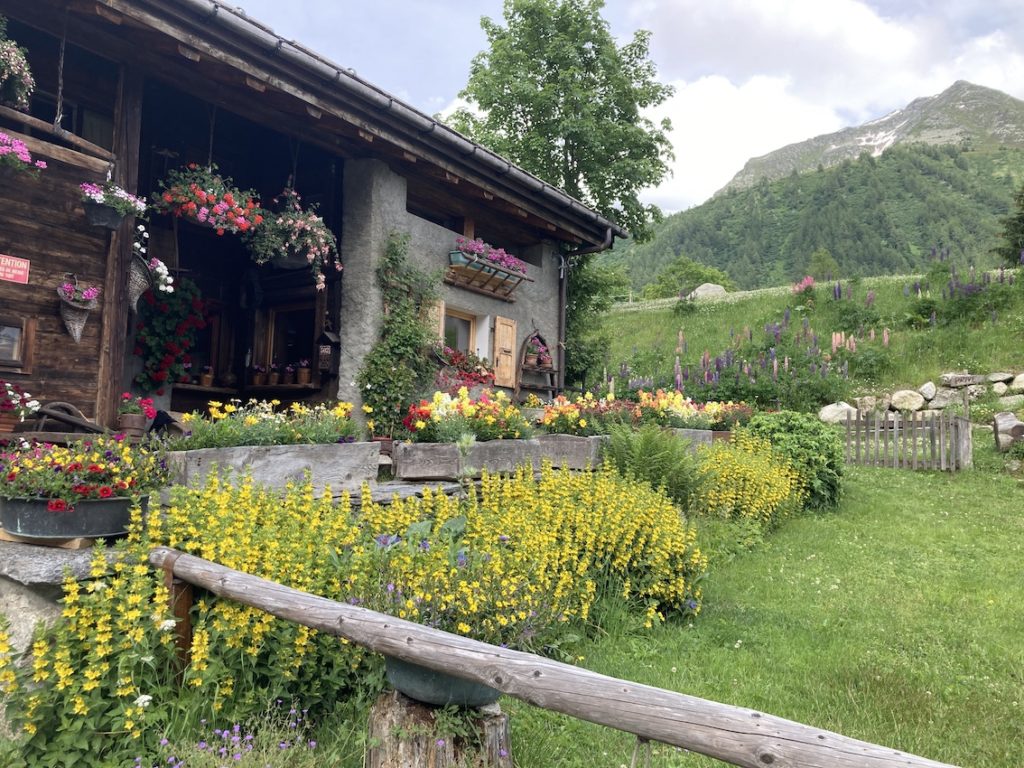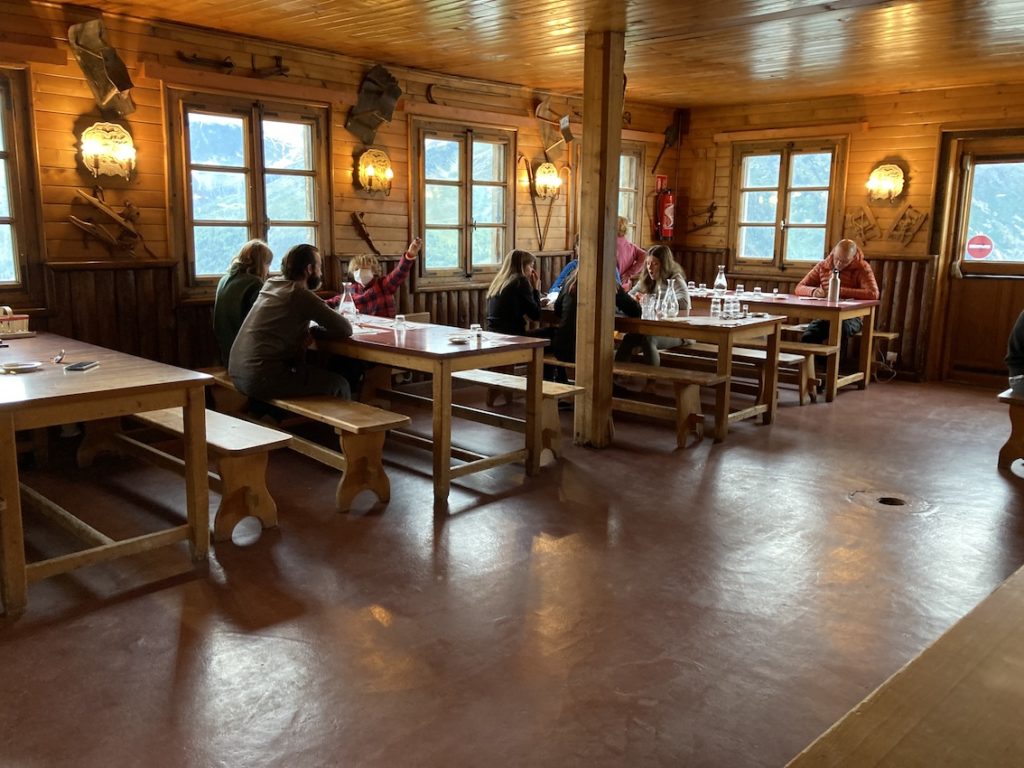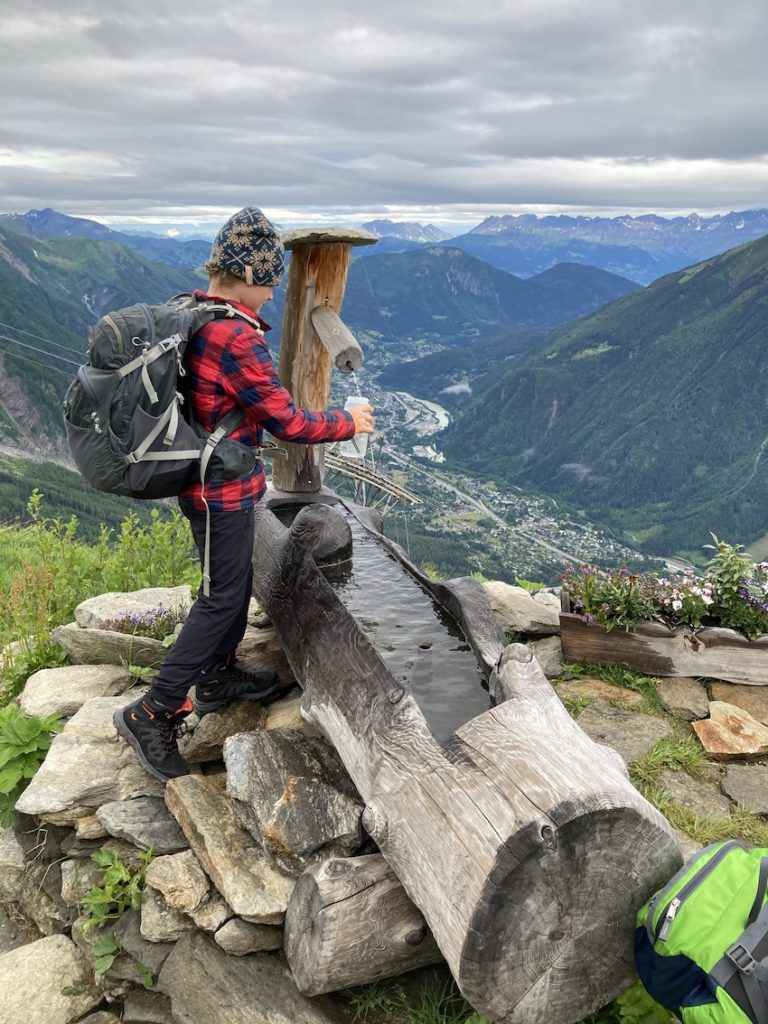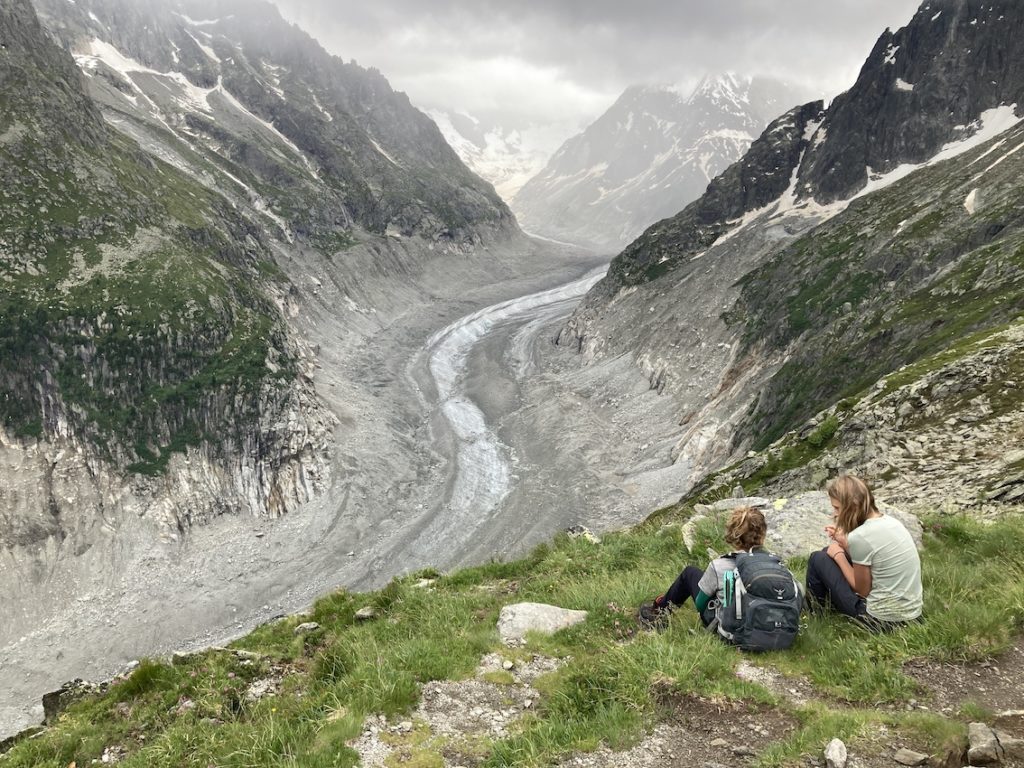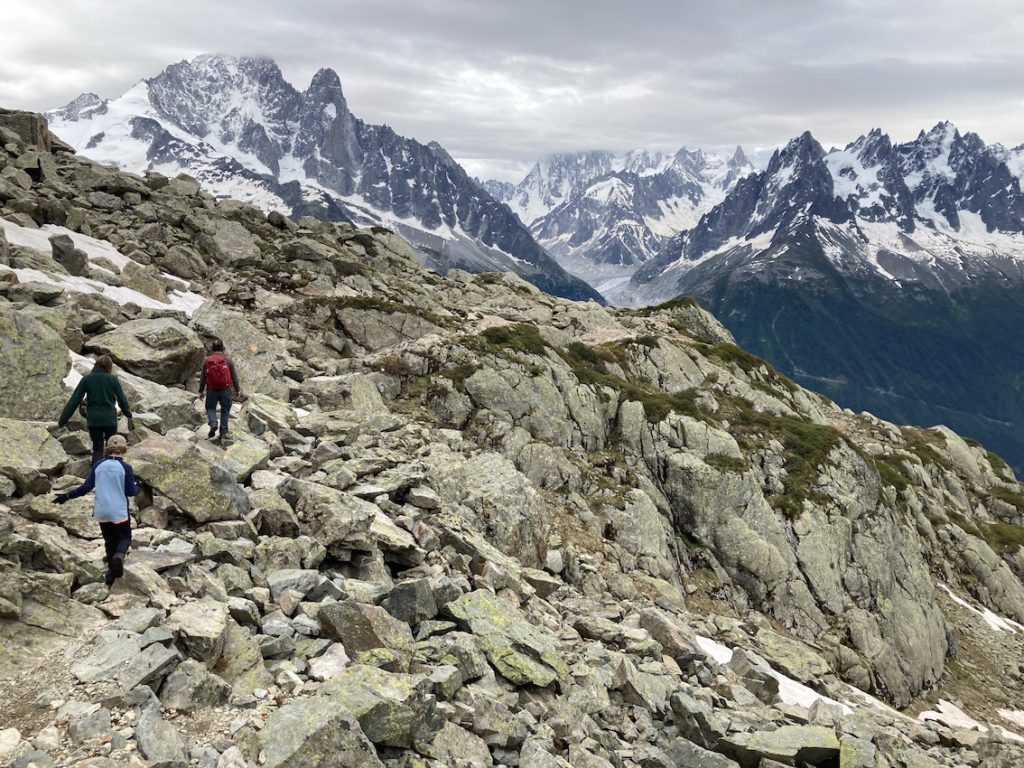(Spoiler: there is food involved)
Story and photos by Kat Nickola
First it rained, then it snowed; my 10-year-old son dug out his layers, my teenage daughter found her waterproof jacket and pants, and we kept hiking. Then the sun came out; I took off my hat and gloves, my husband stuffed his puffy coat back in his backpack, and we hiked on.
The amazing thing? No complaints. We couldn’t take our eyes off the scenery: snow-capped mountains, crusty glaciers, and waterfalls galore! And below us, the tidy mountain town of Chamonix. In the worst weather, the French Alps still deliver lofty vistas.
An outdoor enthusiast’s dream
Chamonix is an outdoor enthusiast’s dream. It is nestled along the Arve river in a steep green valley. And though the town is cute, it’s really above the green where the action is. Past the tree line, running the length of the valley, the seemingly sheer sides give way to the benches – strips of land running parallel to the valley where the mountain is flatter, or at least a bit more gradual in elevation. Then, rising sharply again, high above and barely visible from town, are the highest mountains in the Alps. It is a dramatic landscape.
There are lots of hikes to choose from in the mountains above Chamonix. It is well-signed and easy to navigate with an extensive refuge system. The refuges offer a place to sleep for the night, escape the ever-changing weather, and eat both dinner and breakfast (included in the summer rates).
French refuges – pack light, eat in style
And let me just say that French refuges serve meals with style! We stayed four nights in refuges and had four-course dinners each evening – served to us in our base layers. My kids looked forward to seeing what we got to eat each night and I looked forward to not planning meals.
The sleeping situation varied; at all refuges, we slept in a bunk. There are four people in my family, so at one refuge we got our own room. At another, we had a walled-off cubby in a long room with other overnight bunkers. You are required to bring a lightweight (ie: silk) sleeping bag liner. The refuges supply a duvet and pillow. However, current COVID regulations resulted in some refuges not offering us the duvet. We soon learned that we simply needed to ask for it.
Staying in refuges, instead of hotels or camping, meant we needed to pack light. We had to plan for varying weather, though, so there was one of each kind of layer in our backpacks. And the kids carried their own. Water was plentiful out of springs or at the refuges.
Grand Balcon = great hiking
The Grand Balcon Nord runs along the northern part of the valley, and we focused on this area for our first day of hiking. We took the Flegere gondola up and continued on a chairlift high up to L’Index. Our hike took us on a long loop past scree slopes, frozen lakes, snowfields, and down through meadows to the Flegere Refuge by mid-afternoon.
My kids were out of their minds playing in the snow in July. We barely beat a rainstorm back to the refuge; a trend that would continue. Luckily, the refuges also offered a space to lounge and read while afternoon rain and hail pummeled the windows. In the evening, things cleared and we could take a walk without seeing any of the day-tripping crowds. It was like the mountains were our own.
The next couple of days found us hiking along the Grand Balcon Sud, which runs along the southern slopes of the valley. Again, we started with a gondola up, but this one went well past the benches to the peak of Aiguille du Midi (12,602 ft). There is a visitor center at this dizzying height and a glass-bottomed walkway. There is also year-round snow and guided glacier hikes for the intrepid.
Halfway back down the mountain along the bench, we hiked to our refuge for the evening at Plan du Midi. It turned out to be our favorite of the whole trip; small and intimate perched on the edge of the bench with an incredible view right out our bedroom window.
Our final hike was the most incredible – along the Grand Balcon Sud from Plan du Midi to the Montenvers glacier. There were waterfalls galore, high rocky trails that felt as if we were heading into Mordor, and a beautiful glacier at the end. Each summer, there is a tunnel carved into the Montenvers glacier so we could see the dark blue interior. A cog train runs down the mountain from Montenvers back into Chamonix.
With two kids in tow, I chose hikes that were easily accessible from gondolas and refuges. But, for the truly adventuresome, there is the 170km loop called the Tour Du Mont Blanc that goes along the benches of the Chamonix valley then around the Italian side of Monte Bianco, and back around through Switzerland. Refuges dot the entire route.
Getting there: essentials
Chamonix felt a world away from our home in Kaiserslautern. We drove the 6.5 hours, mostly through Switzerland, and got our Swiss Vignette to drive on the Swiss freeways at the last German rest stop before the border. In France, we left our car parked in the free lot near the Flegere gondola for the duration of our visit. With Mont Blanc MultiPass 3-day tickets (I bought nonconsecutive days with a family discount) from Mont Blanc Natural Resort, we had unlimited use of any transportation in the area, from gondolas and chairlifts to buses and trains.
COVID regulations at this time allowed my husband and me to travel freely since we are vaccinated. My children both got free local COVID tests here in Germany, which allowed them to travel to Switzerland and France. In Chamonix, they both got free tests at a Pharmacy downtown in order to return to Germany. Be sure to check current regulations for all countries.
With only a long weekend to spare, we were pleased with how much time we had on the trail. Thanks, mostly, to staying in the refuges where we always had a warm bed and hot food waiting for us no matter how turbulent the weather became.
For More information
Refuges – some bookable online, others you must call or email (in French)
MontBlanc MutliPass – gondolas, chairlifts, Aiguille du Midi visitor center
www.montblancnaturalresort.com

